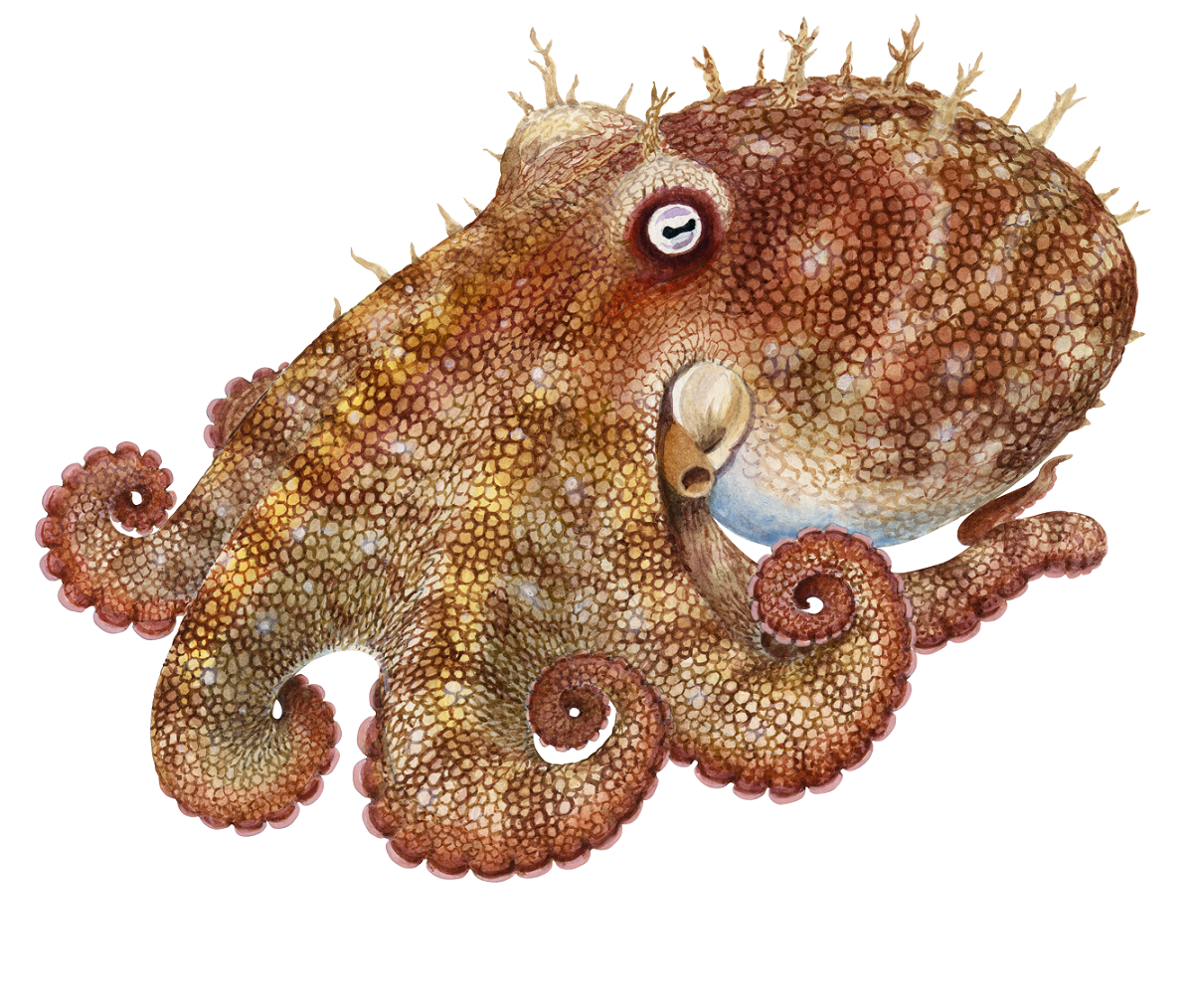Pale Octopus Biology

| Habitat | Sand and mud habitats to depth of 600m. | Norman (2000); Edgar (2008) |
| Distribution | South-east Australia, including Tasmania. | Norman (2000) |
| Diet | Crustaceans and shellfish (bivalves). | Norman and Reid (2000); Norman (2000) |
| Movement and Stock Structure | Limited movement and dispersal from natal habitat. Eastern and western Bass Strait populations likely to be two discrete sub-populations. | Doubleday et al. (2008) |
| Natural Mortality | Undefined but potentially high. | |
| Maximum Age | Up to 18 months. | Leporati et al. (2008b) |
| Growth | Highly variable, partly dependant on water temperature and hatching season. Max weight: 1.2 kg. Growth is initially rapid in the post-hatching phase, before slowing down. Growth has been represented by a 2-phase growth model with an initial exponential growth phase followed by a slower growth phase. Average growth in the first 114 days was estimated at ?=0.246?0.014? in spring/summer and ?=0.276?0.018? in summer/autumn, where W is the weight in g and t is the age in days. | Leporati et al. (2008a); André et al. (2008) |
| Maturity | Size at 50% maturity for females reached at 473g. Males appear to mature earlier (<250 g). | Leporati et al. (2008a) |
| Reproductive biology | Semelparous (i.e. reproduces only once before dying). Spawns all year round with peaks in late summer/early autumn. Low fecundity (<1000 eggs); egg length 11-13 mm. Benthic eggs with active brooding by females. Large benthic hatchlings ~0.25 g. | Leporati et al. (2008a) Leporati et al. (2008c) |



